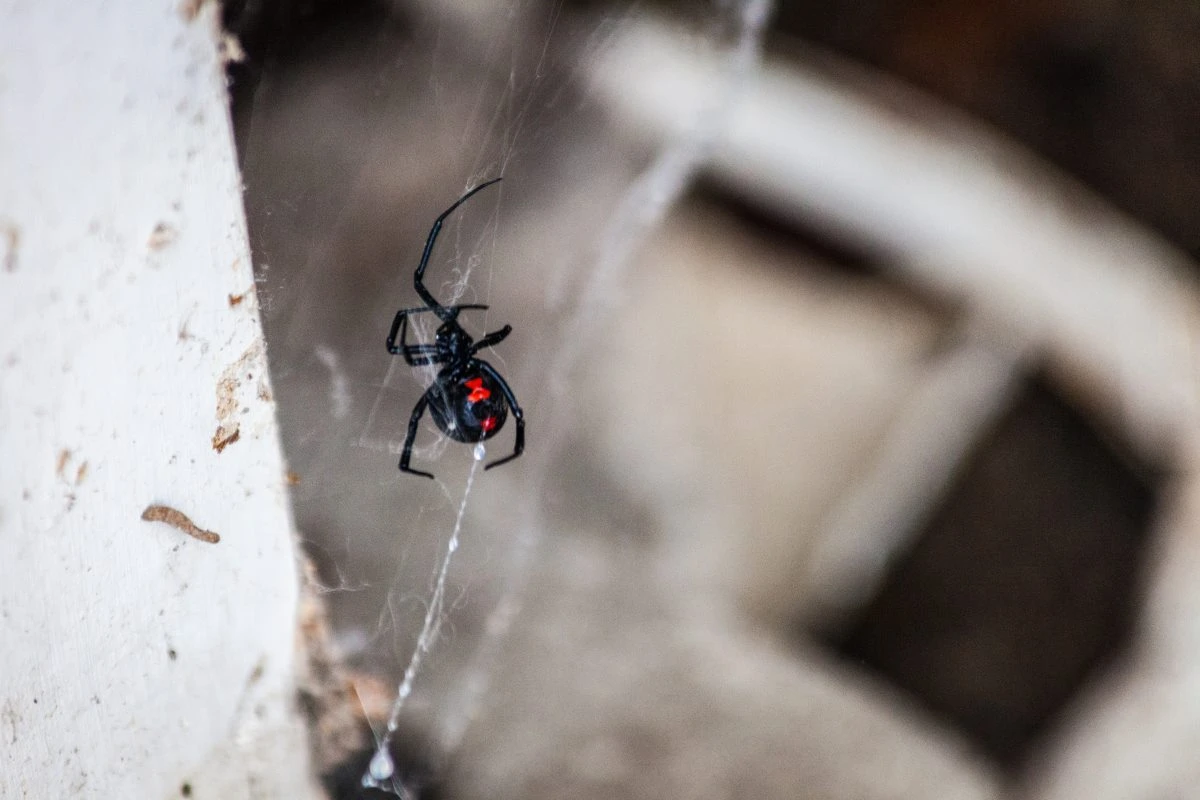Are there actually poisonous spiders in Arizona? Well, the short answer is—kind of. Technically, “poison” can only be absorbed or ingested by a living organism, whereas “venom” is solely injected through a sting or bite penetrating the skin.
Technically speaking, every spider species is venomous, as they all contain venom injected when delivering a bite to their prey or a perceived predator, like humans. When classifying particular spiders that pose a danger to humans, the key considerations are whether their jaws are powerful enough for their bites to break through our skin and whether their venom causes any significant side effects.
With that said, while most venomous spiders in Arizona are harmless, there are still a few types of spiders that residents would be wise to be aware of.
Black Widow Spider
Black widow spiders are found throughout the southwestern United States, including Arizona. Their bodies are shiny black and about a half-inch long. They are recognizable by a red hourglass-shaped marking on the underside of only the females’ abdomens, though this can be hard to spot with the naked eye.
A black widow spider web is most likely located closer to the ground outdoors, in basements and crawl spaces. Its threads might look tangled, uneven, and irregularly shaped. However, these webs are strategically crafted to serve as a home for the spiders as traps for their meals and retreats from threats.
Black widow spider venom contains neurotoxins that can cause severe symptoms, including muscle cramps, abdominal pain, and, in rare cases, respiratory distress. Medical attention should be sought promptly after being bitten—while fatalities are uncommon, children and elderly populations are more susceptible to these severe side effects.
Brown Desert Recluse Spider
The desert recluse spider and Arizona brown spider are part of Arizona’s infamous brown recluse species, which are found more commonly in this region. These spiders often construct their webs in a funnel shape and reside in reclusive environments, such as in the dark, hidden under objects, or burrowed in the ground. Although they might initially look like ordinary brown spiders, these desert recluse spiders have distinct, violin-shaped markings on their backs.
Bite symptoms are often less severe than those of a regular brown recluse. This is not to say there isn’t potential for serious infection and tissue necrosis if left untreated. Even if you don’t detect it initially, if you suspect an Arizona brown recluse spider has bitten you, seek medical attention to prevent further complications.
Wolf Spider
As hunters who seek out their prey at night, wolf spiders are large, fuzzy-looking creatures with bodies measuring up to an inch and a half long. They exhibit colors from brown, gray, or tan to orange.
These arachnids are among some of the most intimidating in terms of appearance. Still, compared to the spider species mentioned above, the venom of wolf spiders is not particularly toxic to humans. However, the bite can be painful, like a bee sting, as their large mandibles can tear the skin. Monitoring any wound from a wolf spider bite is vital to ensure proper healing and prevent infection.
Spooked by Spiders in Arizona? Get in Touch With Burns Pest Elimination
Spiders like to be left alone just as much as we want them to give us the same courtesy. But if you see any of these most dangerous species around your Arizona home, get in touch with Burns Pest Elimination today to request your free quote and set up a pest control inspection.

